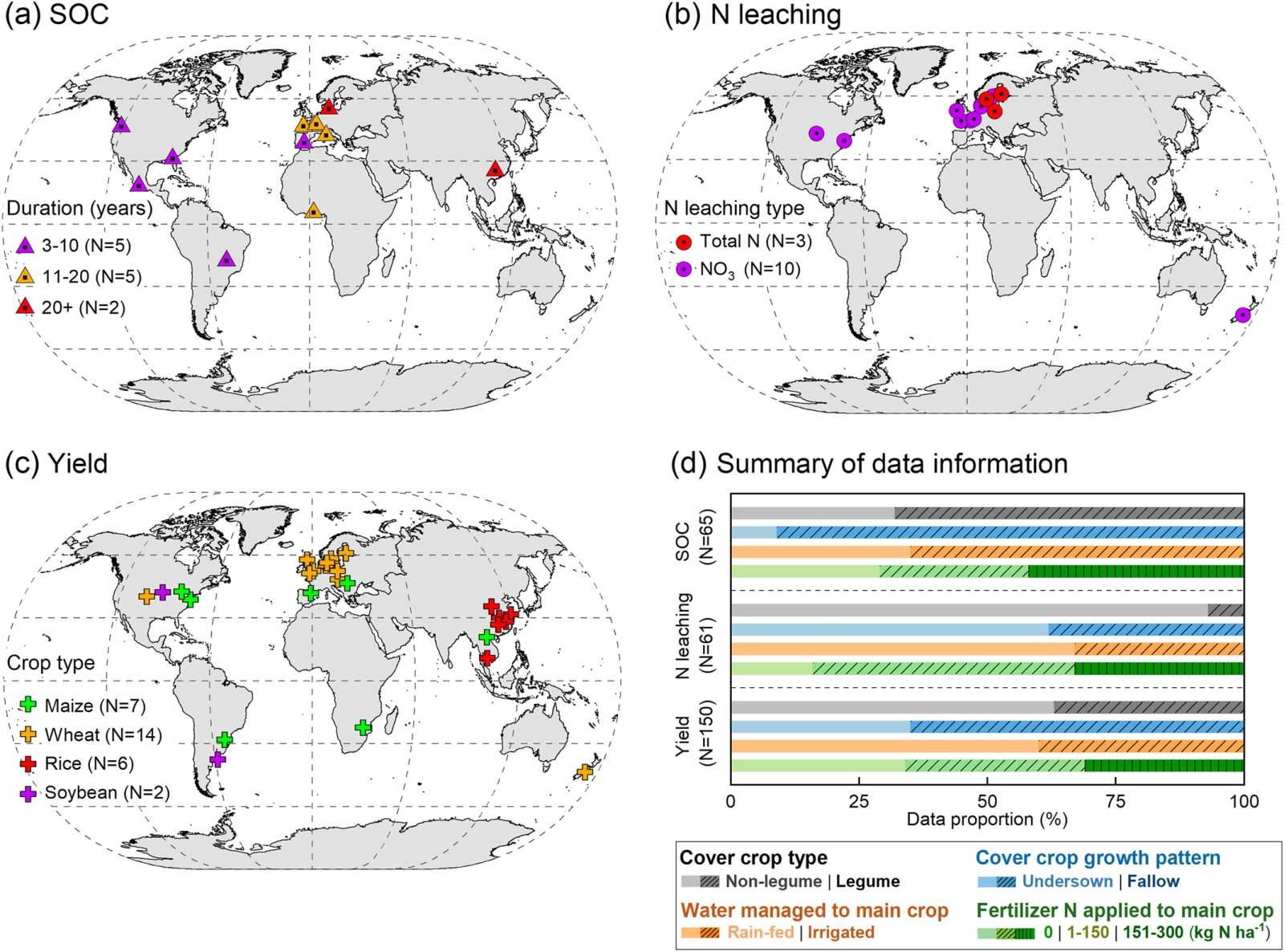May 2023 | EARTHS FUTURE |
Researchers from the Karlsruhe Institute of Technology in Germany and Lund University in Sweden conducted a study to examine the benefits of using cover crops (CCs) in agriculture for soil health and climate change mitigation. The study utilized a dynamic global vegetation model called LPJ-GUESS to assess the impact of herbaceous CCs, with and without biological nitrogen fixation, on soil carbon stocks, nitrogen leaching, and crop yields. The model's performance was evaluated against field trial observations and compared with existing large-scale estimates. The results showed that incorporating N-fixing CCs with no-tillage techniques could potentially increase global soil carbon levels by 7% (equivalent to 0.32 Pg C yr−1 in croplands) and reduce N leaching by 41% (equivalent to 7.3 Tg N yr−1) compared to fallow land after 36 years of simulation since 2015. This practice was also associated with a 2% increase in total crop production (37 million tonnes yr−1) in the last decade of the simulation, benefiting major crops like wheat, maize, rice, and soybean. The study demonstrated that implementing CCs can promote long-term environmental sustainability without compromising crop productivity in global croplands, though the effects may vary depending on crop types and nitrogen fertilizer usage.

Distribution of cover cropping field studies used for model evaluation of cropland soil organic carbon (SOC) stocks (a), N leaching loss (b), and crop yields (c). All studied SOC sites (12) had continuously practiced cover crop (CC) cultivation for more than 3 years, and the leached N loss at the evaluated sites (13) were reported as either total N (mineral plus organic) or nitrate (NO3). The influence of CC practice on crop production was investigated in four cropping systems (maize, wheat, rice, and soybean) at 29 sites from 16 countries. A summary of field experiments—cover crop types (legumes or non-legumes), growth patterns (undersown or fallow), and water and N fertilizer managements to main crops—is shown in (d).





